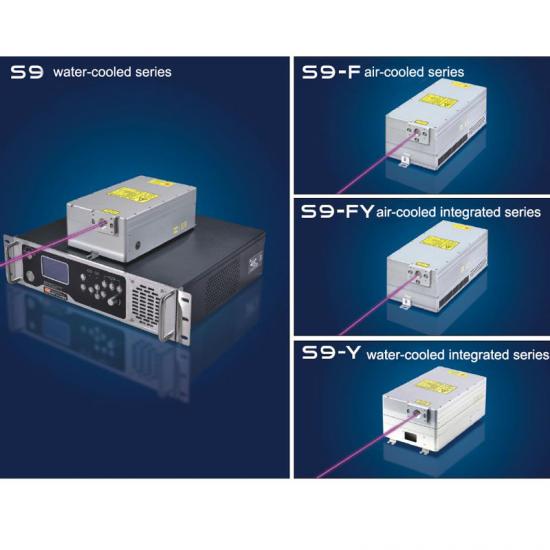Latest Blog
Application of 355nm Ultraviolet Nanosecond Laser in Sapphire Polishing
Jul 21 , 2022Application of 355nm Ultraviolet Nanosecond Laser in Sapphire Polishing
As a very important industrial material, sapphire has the characteristics of high light transmittance, high wear resistance, high hardness and high stability. It is widely used in industry, scientific research, aerospace and other fields, and is often used in the manufacture of GaN epitaxy. layer growth, LED substrate materials, etc.
The application of sapphire in the above fields has strict requirements on its surface quality. The surface roughness of sapphire is required to be less than 1nm. The sapphire substrate used for high-brightness and ultra-high-brightness LEDs requires a complete surface lattice, ultra-smooth, no damage. However, due to its hard and brittle characteristics, traditional mechanical grinding, chemical polishing, thermal polishing, EDM polishing and other methods are prone to surface micro-cracks, scratches, dents and other problems. Therefore, ultra-precision polishing of sapphire has become a major difficulty in related manufacturing fields.

uv laser | green laser | Ultraviolet lasers | uv dpss laser | nanosecond laser | UV laser source | Solid State Lasers
Laser polishing is a promising special processing technology. Its principle is that a high-energy-density laser beam scans the sapphire surface, and the sapphire surface absorbs the energy of laser photons. When the absorbed energy reaches the destruction threshold of the sapphire material, the sapphire material produces Decomposition cracking, melting and vaporization, etc., to achieve material removal to form a polished surface.
This polishing process can use the ultraviolet laser output by the 355nm ultraviolet nanosecond solid-state laser developed and designed by RFH, which has high single-photon energy and high power density, and realizes material removal by interacting with the material, and its pulse width is very high. Narrow, about 20ns, the laser action time is short, and the thermal effect is very small, especially suitable for hard and brittle materials that are difficult to process by conventional methods.
It is worth mentioning that the forbidden band width of sapphire is 9.9eV, the bond energy of AL-O bond is 6.063eV, and the single-photon energy of 355nm UV laser is 3.5eV, which is less than the energy of chemical bond breaking of sapphire crystal. In order to achieve polishing on the sapphire surface, it needs to be removed by multi-photon absorption, initiating or controlling chemical reactions between materials, resulting in the breaking and reorganization of sapphire chemical bonds, the destruction of the lattice structure or the transition of energy levels, generating new substances or making some materials. Leave the body, so as to achieve the purpose of processing materials. Since the surface temperature can reach above the boiling point in a relatively short time, the use of a 355nm UV laser can suppress the generation of microcracks during the polishing process.
It can be seen that the polishing process is the result of photochemical and thermal effects. The study also found that laser polishing is not only related to the energy density of the laser, the repetition frequency and the surface condition of the sapphire, but also to the scanning method of the laser, the incident angle of the beam, and the scanning speed. Therefore, in the actual polishing process, it is necessary to adjust the relevant process parameters in advance to obtain the expected polishing effect.
Using laser to polish sapphire can well avoid the drawbacks of traditional grinding operations, so that it can obtain good polishing effect, high degree of automation, high efficiency, and the non-contact processing method has little damage to the sapphire material matrix These advantages are particularly suitable for manufacturers to increase production capacity, improve quality and reduce costs.